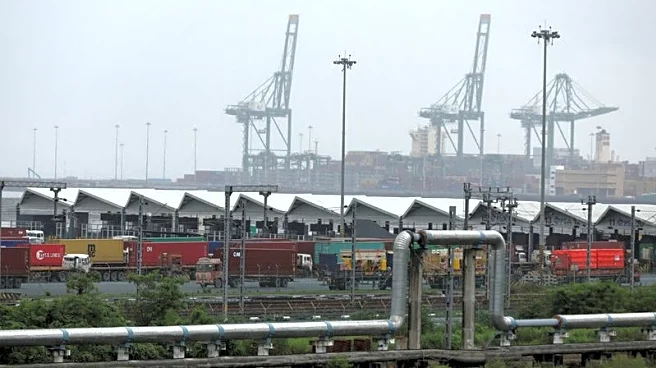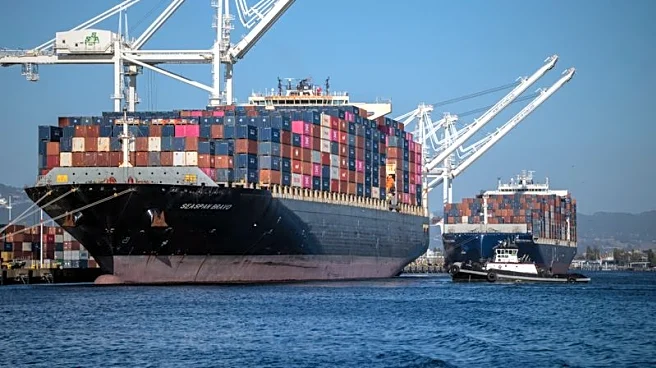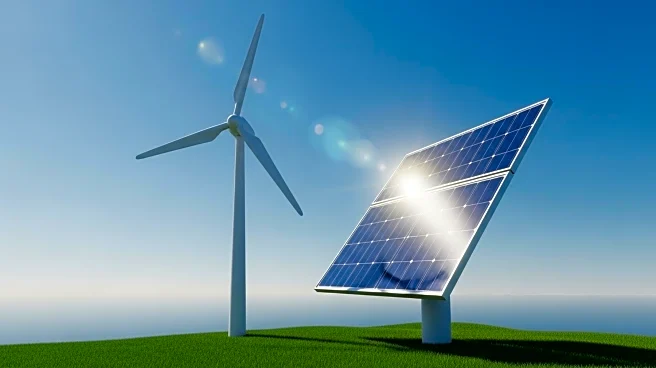What's Happening?
The World Bank has projected a slowdown in South Asia's economic growth, forecasting a decrease from 6.6% in 2025 to 5.8% in 2026. This adjustment is attributed to higher-than-expected tariffs on Indian exports to the United States. The tariffs, imposed by President Trump, are among the highest for any U.S. trading partner, affecting approximately $50 billion worth of Indian exports. Key sectors impacted include textiles, gems, jewelry, and the shrimp industry. In response, Indian Prime Minister Narendra Modi has implemented significant tax cuts on various goods and continues to invest heavily in infrastructure projects.
Why It's Important?
The imposition of high tariffs on Indian exports by the U.S. is expected to have significant economic repercussions for South Asia, particularly India. The affected sectors are labor-intensive, potentially leading to job losses and economic strain within these industries. The slowdown in growth could also impact regional economic stability and development. For the U.S., these tariffs may lead to increased prices for imported goods, affecting consumers and businesses reliant on these products. The situation underscores the broader implications of trade policies on international economic relations and domestic economies.
What's Next?
As the tariffs continue to impact Indian exports, the Indian government may seek further measures to mitigate the economic fallout, potentially through diplomatic negotiations or additional domestic economic reforms. The U.S. may also face pressure from domestic industries and consumers affected by increased prices. The situation could lead to broader discussions on trade policies and their impact on global economic dynamics.












